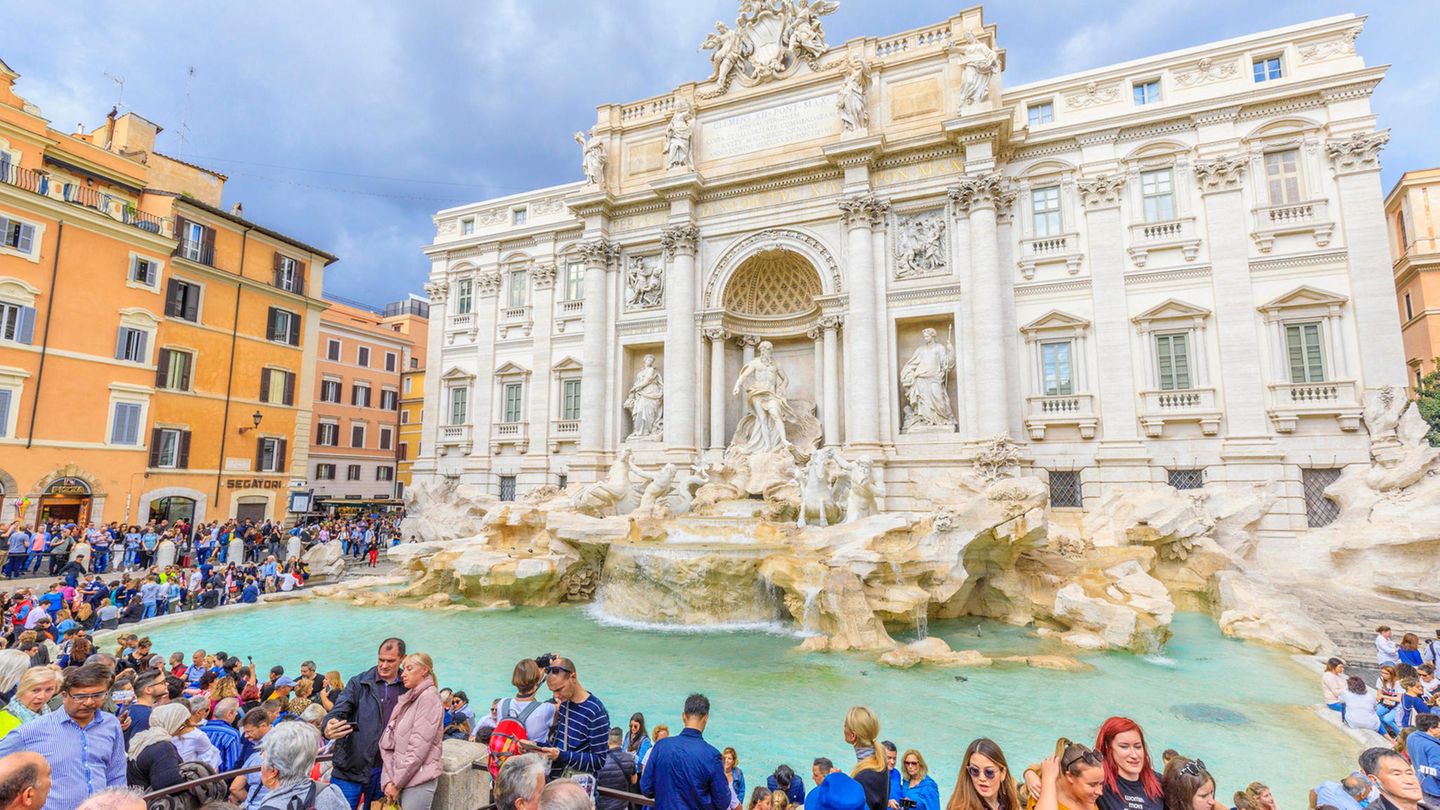On site
The Trevi Fountain in Rome is being spruced up for the Holy Year – which will give visitors special insights. From December onwards, access could be limited.
The mighty Trevi Fountain, one of Rome’s landmarks, is being restored. And some good news straight away: you will then get closer to him than ever before. A catwalk on the water basin takes you directly in front of the baroque setting made of travertine and marble, where you can marvel at the sea god Oceanus and all the mythical creatures that cavort on the rocky landscape over which the water pours into a large, shallow basin. Sea horses and conch-blowing tritons rush towards the viewer.
Until now, the stone hybrid creatures were barely visible to many people due to the huge influx of tourists. The planned horseshoe-shaped walkway is expected to be completed within a month and will give visitors the opportunity to meet the sea creatures at eye level by the end of the restoration, probably at the end of December. If you don’t want to do without the famous coin toss over your shoulder, you can do that during the cleaning work. For this purpose, baskets are placed in the emptied pool.
The fountain is corralled
The bad news, however, is that only a few will have the privilege of seeing all the marble creatures up close. Because the rush will be immense – and the tourism city councilor Alessandro Onorato still wants to find out in a test phase how many people will be allowed on the jetty at the same time. What is certain is that visitors cannot pre-register. The planners don’t think this is necessary, because the space in front of Rome’s largest fountain would remain freely accessible and the covering of the fence around it would be transparent. The argument: If you don’t want to queue, you won’t be denied a view of the fountain.
Eighty million liters of water from the springs of the Sabine Mountains flow through the Trevi Fountain every day. Limescale deposits and plant infestation cause problems for the work of art. The pool is routinely emptied and cleaned with water and chlorine every 14 days. Now the fountain will be brought to a high shine over the next two and a half months. Just in time for the start of the Catholic Holy Year, which begins on December 24th. 327,000 euros from the EU development fund are earmarked for the well cleaning.
Rome gets dressed up for the Holy Year
Rome is dressing up – and that doesn’t just apply to the Trevi Fountain. In December, all of the city’s major fountains are polished, including the one in front of the Pantheon, the Four Rivers Fountain and the side pools in Piazza Navona in the historic center. The cleaning of the turtle fountain in the former Jewish ghetto and the pool called “Barcaccia” at the Spanish Steps will drag on until next year. They are all tourist attractions and are hopelessly overcrowded almost every day of the year. It seems questionable whether access should be limited everywhere, as is planned at the Trevi Fountain. Too complicated, too expensive.
For fifteen years, Rome’s tourism officer Onorato has observed how his city is increasingly besieged by “people on the hunt for the best selfie.” His strategy aims to promote lesser-known destinations off the beaten tourist path. For example, the excavations of the port city of Ostia Antica, which can be reached by train in 30 minutes. “This will help us reduce the pressure of tourist crowds in the center and at the same time provide more income to remote places,” says Onorato. He said he is in the process of compiling a list of these alternative destinations and then launching a marketing campaign to redirect the flow of visitors.
A reform of the tourist tax should also help to relieve the burden on the historical center. According to Onorato’s wishes, this should be staggered in the future. According to the city politician, it is not fair that a visitor who stays outside the center has to pay the same as someone who lives at the Spanish Steps. “We are working on many measures in parallel to promote sustainable tourism and to stop the rush of short-term travelers on the same well-trodden routes,” says Onorato.
The Trevi Fountain has to cope with four million tourists every year. That’s 10,000 to 12,000 visitors per day. Crowding around the best selfie spot and a loud babble of voices are causing the fountain, which once gained world fame thanks to the classic film “La Dolce Vita” (1960), to deteriorate. Anita Ekberg wades lasciviously through the waterfall in an evening dress and seduces Marcello Mastroianni as a tabloid reporter. To the chagrin of the Roman city administration, the iconic scene still finds many imitators today, although without the elegance of the time.
After the restoration, the Trevi Fountain will also become a kind of test laboratory for how to deal with “overtourism”. “We want responsible and moderate tourism,” explains Onorato. Access should also be limited after the restoration. It is not yet clear whether this will succeed. Critics counter that restrictions of this kind damage Rome’s reputation and do not fit with the city’s attitude to life. The discussed charging of an entrance fee is even more controversial. The aim is to finance the staff for access controls with a contribution of around two euros. But the idea is foreign to many Romans – and quite altruistic, by the way. Because the fee should only be collected from non-Romans.
Source: Stern
I have been working in the news industry for over 6 years, first as a reporter and now as an editor. I have covered politics extensively, and my work has appeared in major newspapers and online news outlets around the world. In addition to my writing, I also contribute regularly to 24 Hours World.




